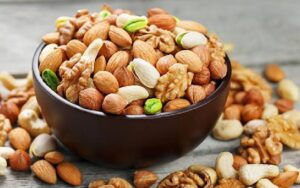
Characteristics of Quality Chocolate
Chocolate is a beloved treat worldwide, but not all chocolate is created equal. High-quality chocolate offers a sensory experience that goes beyond mere sweetness. From the richness of flavor to the smoothness of texture, several factors contribute to the overall quality of chocolate. Understanding these characteristics can help you choose the best chocolate and fully appreciate its nuances. In this blog post, we will explore the most important characteristics of quality chocolate, ensuring you can savor the best of what this delightful treat has to offer.
Click the text to discover the best tips for exercise, nutrition, and top-notch NIKE gear
The Origin of the Beans
Single-Origin vs. Blended Beans
One of the first indicators of quality chocolate is the origin of the cocoa beans. Single-origin chocolate is made from beans sourced from a specific region or even a single plantation. This type of chocolate offers unique flavor profiles that reflect the terroir, or the environmental conditions, of the growing area. In contrast, blended beans come from multiple regions and are combined to create a consistent flavor.
The Importance of Terroir
Just like wine, the terroir affects the flavor of chocolate. Factors such as soil, climate, and altitude influence the characteristics of the cocoa beans. High-quality chocolate makers often highlight the origin of their beans, as it provides insight into the unique flavors and complexities of the chocolate. When choosing chocolate, look for information about the bean’s origin to understand the potential flavor profile.
The Role of Ingredients
Pure Ingredients
Quality chocolate is made with pure, simple ingredients. The primary components should include cocoa mass, cocoa butter, and sugar. Avoid chocolates with a long list of additives and artificial flavors. High-quality chocolate makers focus on the natural flavors of the cocoa beans and use minimal ingredients to highlight these characteristics.
The Importance of Cocoa Content
The cocoa content is a crucial factor in determining the quality of chocolate. Dark chocolate typically contains at least 70% cocoa solids, which provide a rich, intense flavor. Milk chocolate should have a significant percentage of cocoa solids, usually around 30-50%, to ensure a balance of sweetness and cocoa flavor. White chocolate, while not technically chocolate due to the absence of cocoa solids, should have a high percentage of cocoa butter for a smooth, creamy texture.
The Chocolate-Making Process
Bean-to-Bar Production
Bean-to-bar chocolate makers control every step of the chocolate-making process, from sourcing the beans to the final product. This hands-on approach ensures the highest quality and allows for precise control over flavor development. Bean-to-bar producers often roast their beans in small batches, allowing for optimal flavor extraction and highlighting the unique characteristics of each batch.
Conching and Tempering
Conching and tempering are critical steps in the chocolate-making process. Conching involves continuously mixing the chocolate to develop a smooth texture and enhance flavor. This process can take several hours or even days, depending on the desired result. Tempering involves heating and cooling the chocolate to stabilize the cocoa butter crystals, resulting in a glossy finish and a satisfying snap when broken. High-quality chocolate undergoes thorough conching and tempering to ensure a superior texture and appearance.
The Sensory Experience
Appearance
Quality chocolate should have a smooth, glossy surface without any blemishes or discoloration. The color should be uniform and rich, reflecting the type of chocolate and the quality of the cocoa beans. Dark chocolate should have a deep, dark brown color, while milk chocolate should be lighter with a creamy appearance. Any signs of bloom, a whitish coating caused by fat or sugar crystals, indicate improper storage or tempering.
Aroma
The aroma of chocolate provides insight into its quality and flavor profile. High-quality chocolate should have a complex, rich aroma with notes of cocoa, vanilla, and other natural scents. Avoid chocolate with artificial or overly sweet smells, as these can indicate lower quality or added flavors. Take the time to inhale the aroma before tasting to fully appreciate the chocolate’s depth.
Texture
The texture of chocolate is a key indicator of quality. It should be smooth and creamy, melting evenly in your mouth. High-quality chocolate has a fine texture due to thorough conching, which breaks down the cocoa particles and distributes the cocoa butter evenly. Gritty or grainy chocolate indicates poor processing or the use of inferior ingredients.
Flavor
The flavor of quality chocolate is complex and multifaceted. It should have a well-balanced taste with a blend of bitterness, sweetness, and acidity. High-quality dark chocolate will have a rich, intense cocoa flavor with subtle notes of fruit, nuts, or spices, depending on the bean’s origin. Milk chocolate should have a harmonious blend of cocoa and milk flavors, while white chocolate should be creamy and slightly sweet. The flavor should linger on your palate, revealing different layers as it melts.
Ethical and Sustainable Practices
Fair Trade and Direct Trade
Ethical sourcing is an important characteristic of quality chocolate. Look for chocolate that is Fair Trade certified or sourced through direct trade practices. These certifications ensure that farmers receive fair compensation for their work and that the chocolate is produced under ethical conditions. Supporting ethically sourced chocolate helps promote sustainable farming practices and improves the livelihoods of cocoa farmers.
Organic and Sustainable Farming
Organic chocolate is made from cocoa beans grown without synthetic pesticides or fertilizers. Sustainable farming practices, such as agroforestry and crop rotation, help maintain soil health and biodiversity. Choosing organic and sustainably produced chocolate not only supports environmental conservation but also often results in higher quality beans with richer flavors.
Packaging and Presentation
Protective Packaging
Quality chocolate is often packaged in a way that protects it from light, heat, and moisture. Proper packaging helps preserve the chocolate’s flavor and texture. Look for chocolate that is wrapped in foil or stored in resealable bags to maintain freshness. The packaging should also provide information about the chocolate’s origin, ingredients, and production process, giving you insight into its quality.
Aesthetic Appeal
While the packaging doesn’t directly affect the quality of the chocolate, it often reflects the care and attention to detail of the producer. Beautifully designed packaging can enhance the overall experience and make the chocolate more enjoyable. High-quality chocolate makers often invest in elegant, informative packaging that showcases their commitment to excellence.
Pairing and Enjoying Chocolate
Pairing with Beverages
Pairing chocolate with beverages can enhance its flavor and create a more enjoyable experience. Dark chocolate pairs well with red wine, coffee, or port, as the rich flavors complement each other. Milk chocolate can be paired with lighter wines, such as Riesling or Champagne, while white chocolate pairs well with sweet dessert wines or herbal teas. Experiment with different pairings to discover new flavor combinations and enhance your chocolate-tasting experience.
Tasting Techniques
To fully appreciate the characteristics of quality chocolate, take the time to savor it using proper tasting techniques. Start by examining the chocolate’s appearance and aroma. Break off a piece and listen for the snap, indicating proper tempering. Place the chocolate on your tongue and let it melt slowly, allowing the flavors to unfold. Pay attention to the texture, flavor, and any subtle notes that emerge as you savor each bite.
Storing Chocolate
Optimal Conditions
Proper storage is essential for maintaining the quality of chocolate. Store chocolate in a cool, dry place away from direct sunlight, ideally between 60-70°F (15-21°C). Avoid storing chocolate in the refrigerator, as the humidity can cause sugar bloom and affect the texture. If you live in a warm climate, consider using an airtight container to protect the chocolate from moisture and temperature fluctuations.
Shelf Life
Quality chocolate has a relatively long shelf life if stored properly. Dark chocolate can last up to two years, while milk and white chocolate typically last about one year. However, chocolate with added ingredients, such as nuts or fruits, may have a shorter shelf life due to the perishable nature of these additions. Always check the expiration date and store chocolate properly to ensure it remains fresh and flavorful.
The Art of Chocolate Making
Craftsmanship and Artistry
The art of chocolate making involves skill, precision, and creativity. Quality chocolate is crafted by artisans who understand the intricacies of the chocolate-making process and take pride in their work. These artisans experiment with different beans, roasting techniques, and flavor combinations to create unique and exceptional chocolate. When choosing chocolate, look for products made by reputable artisans who prioritize quality and craftsmanship.
Innovation and Tradition
While traditional chocolate-making techniques are essential for producing high-quality chocolate, innovation also plays a role in the industry. Artisans continuously explore new methods and ingredients to push the boundaries of chocolate making. This blend of tradition and innovation results in a diverse range of high-quality chocolates that cater to different tastes and preferences.
Conclusion: Savoring Quality Chocolate
Understanding the characteristics of quality chocolate can enhance your appreciation and enjoyment of this beloved treat. From the origin of the beans to the craftsmanship of the chocolate maker, each factor contributes to the overall experience. By paying attention to the ingredients, production process, sensory qualities, and ethical practices, you can choose high-quality chocolate that delights your senses and supports sustainable practices. Whether you’re indulging in a piece of dark chocolate with a glass of wine or savoring a creamy milk chocolate bar, take the time to savor the flavors and textures that make quality chocolate truly exceptional.
Discover the most important characteristics of quality chocolate. Learn how to identify high-quality chocolate based on texture, flavor, ingredients, and more. This comprehensive guide will help you become a chocolate connoisseur.
Fruits and Vegetables as a Substitute for Medicines
Why is Honey Healthy? Unlocking the Golden Elixir’s Secrets


